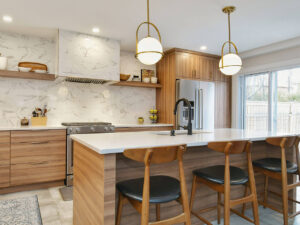Things to Know Before Buying a Tiny Home
Those who have been planning to buy a good home that does not involve a high mortgage or any kind of heavy expenses can think of a tiny house. To buy a tiny home, however, requires a different approach as compared to buying any regular home. The reason why this concept is trending is that it is easy to maintain, efficient when it comes to energy usage, and has been designed considering environmentally friendly solutions. However, few things need to be considered before purchasing a tiny house so that at the time of investment at least there will not be any kind of doubt popping in the head.
Know more about a Tiny House
This type of house can vary in size from 100 to 400 feet in size. Usually, American homes are around 16000 to 1650 square feet but tiny homes are quite different. Their structure is also independent. Some options are even built by the owner itself. Some homes are purchased with simply a tiny home kit too. Such a house is mobile and can get set easily on the foundation. These days the rate of mortgages is growing quite high. In such growing expenses, having a tiny home can improve living and lessen the cost of survival too.
With such homes, there can be better savings on taxes and overall costs. Besides, it also leaves a small carbon footprint as they are designed to keep environment-friendly concepts in nature. This means, such homes create less waste and have better resources well utilized. Those owners considering buying such homes are likely to enjoy better leisurely activities in this home.
The value of a Tiny House Cost
The average price of a tiny house is usually $45,000, whereas the regular price can range between $30,000 and $70,000. In terms of the actual value of the house, it is better to get the estimation only after having clarity on the size of the home, materials to be used for building the home, and the location where it shall be built. Also, it is important to think of the permit value in the area and the amenities and utilities proximities.
Consider overall lifestyle
Tiny homes can be a great location for people who are a couple, single, or have been retirees. Since there will not be many of the rooms inside, but for a single person to two, there will be enough space to have a peaceful sleep, enjoy relishing food and get a shower too. But those who are planning to expand their family might want to skip this idea as this eventually may turn out to be a limited spacing choice for 3 or more people. People who stay in such tiny home communities usually find the outdoors as the crucial home extension. That is why they often spend quite an amount on gardening and working remotely.
Focus on the overall cost of utility
While creating a home, it is wise to think about how well to access things such as water supply, sewage disposal, internet access, and electricity. Some people rely on municipal water however there is also an option of a solar panel for generating much of the electricity as per the needs. Those who are looking for budget-saving at home may want to choose the path of creativity but for this careful planning is needed.
Get it on paper
Even when a tiny home is being purchased it is always better to have it on paper. Those who have a certified builder making such a home need to make sure that all things are on paper agreed and signed. Usually, the important documents that an owner must have are a Schedule for completion, Blue Prints, and Cost breakdown of the whole value. It is also important to make sure that the builder’s warranty if created must be read thoroughly and then only signed. There should be clarity on who shall be fixing the appliances and the products of a third party.
Conclusion
Of all things, while planning to buy a tiny home, it is better to focus on selecting the right location. There can be some land that possibly is extensive. But there are alternatives too for which research is needed. Most of the tiny homeowners prefer the warmer year-round locales which usually are close to the city and job areas. Locations like Texas, California, Florida, and North Carolina are the best options for a tiny home.








